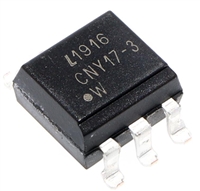PRELIMINARY
PSoC®5:CY8C52FamilyData Sheet
clocks, together with programmable clock dividers, provide the
flexibility to integrate most timing requirements.
The details of the PSoC power modes are covered in the “Power
System” section on page 22 of this data sheet.
PSoC uses JTAG (4 wire) or Serial Wire Debug (SWD) (2 wire)
interfaces for programming, debug, and test. Using these
standard interfaces enables the designer to debug or program
the PSoC with a variety of hardware solutions from Cypress or
third party vendors. The Cortex-M3 debug and trace modules
include Flash Patch and Breakpoint (FPB), Data Watchpoint and
Trace (DWT), Embedded Trace Macrocell (ETM), and Instru-
mentation Trace Macrocell (ITM). These modules have many
features to help solve difficult debug and trace problems. Details
of the programming, test, and debugging interfaces are
discussed in the “Programming, Debug Interfaces, Resources”
section on page 51 of this data sheet.
The CY8C52 family supports a wide supply operating range from
1.71 to 5.5V. This allows operation from regulated supplies such
as 1.8 ± 5%, 2.5V ±10%, 3.3V ± 10%, or 5.0V ± 10%, or directly
from a wide range of battery types. In addition, it provides an
integrated high efficiency synchronous boost converter that can
power the device from supply voltages as low as 0.5V. This
enables the device to be powered directly from a single battery
or solar cell. In addition, the designer can use the boost converter
to generate other voltages required by the device, such as a 3.3V
supply for LCD glass drive. The boost’s output is available on the
Vboost pin, allowing other devices in the application to be
powered from the PSoC.
2. Pinouts
PSoC supports a wide range of low power modes. These include
a 300 nA hibernate mode with RAM retention and a 2 µA sleep
mode with real time clock (RTC). In the second mode the
optional 32.768 kHz watch crystal runs continuously and
maintains an accurate RTC.
The Vddio pin that supplies a particular set of pins is indicated
by the black lines drawn on the pinout diagrams in Figure 2-1
through Figure 2-3. Using the Vddio pins, a single PSoC can
support multiple interface voltage levels, eliminating the need for
off-chip level shifters. Each Vddio may sink up to 100 mA total to
its associated I/O pins. On the 68 pin and 100 pin devices each
set of Vddio associated pins may sink up to 100 mA. The 48 pin
device may sink up to 100 mA total for all Vddio0 plus Vddio2
associated I/O pins and 100 mA total for all Vddio1 plus Vddio3
associated I/O pins.
Power to all major functional blocks, including the programmable
digital and analog peripherals, can be controlled independently
by firmware. This allows low power background processing
when some peripherals are not in use. This, in turn, provides a
total device current of only 2 mA when the CPU is running at
6 MHz.
[2]
Figure 2-1. 48-Pin SSOP Part Pinout
(SIO) P12[2]
(SIO) P12[3]
Vdda
Vssa
1
2
3
4
5
6
7
8
9
48
47
Lines show
Vddio to I/O
supply
(GPIO) P0[0]
(GPIO) P0[1]
(GPIO) P0[2]
(Extref0, GPIO) P0[3]
Vddio0
46 Vcca
45 P15[3] (GPIO, kHz XTAL: Xi)
44 P15[2] (GPIO, kHz XTAL: Xo)
association
P12[1] (SIO, I2C1: SDA)
43
42 P12[0] (SIO, I2C1: SCL)
41 Vddio3
(GPIO) P0[4]
(GPIO) P0[5]
40 P15[1] (GPIO, MHz XTAL: Xi)
39 P15[0] (GPIO, MHz XTAL: Xo)
(GPIO) P0[6] 10
(GPIO) P0[7]
Vccd 12
Vssd
Vddd 14
Vccd
37 Vssd
Vddd
35 P15[7] (USBIO, D-, SWDCK)
11
38
SSOP
13
36
[2]
[2]
(TRACECLK, GPIO) P2[3]
P15[6] (USBIO, D+, SWDIO)
P1[7] (GPIO)
15
16
17
18
34
33
32
31
(TRACEDATA[0], GPIO) P2[4]
Vddio2
P1[6] (GPIO)
(TRACEDATA[1], GPIO) P2[5]
Vddio1
(TRACEDATA[2], GPIO) P2[6] 19
30 P1[5] (GPIO, nTRST)
(TRACEDATA[3], GPIO) P2[7]
P1[4] (GPIO, TDI)
20
21
22
29
28
27
Vssb
Ind
P1[3] (GPIO, TDO, SWV)
P1[2] (GPIO, configurable XRES)
Vboost 23
Vbat 24
26 P1[1] (GPIO, TCK, SWDCK)
25 P1[0] (GPIO, TMS, SWDIO)
Document Number: 001-55034 Rev. *A
Page 5 of 85
[+] Feedback










 压敏电阻器在直流电路中的过压保护应用探讨
压敏电阻器在直流电路中的过压保护应用探讨

 电感耐压值及其与电感大小的关系
电感耐压值及其与电感大小的关系

 CNY17F光耦合器:特性、应用、封装、引脚功能及替换型号解析
CNY17F光耦合器:特性、应用、封装、引脚功能及替换型号解析

 DS1307资料解析:特性、引脚说明、替代推荐
DS1307资料解析:特性、引脚说明、替代推荐
